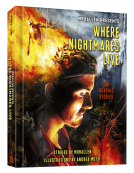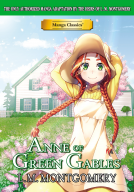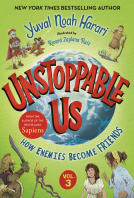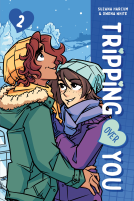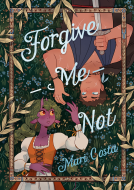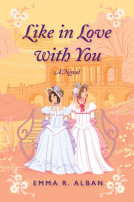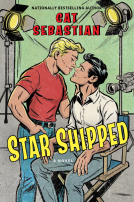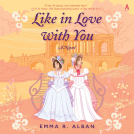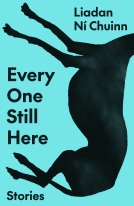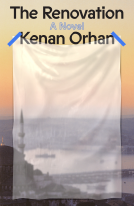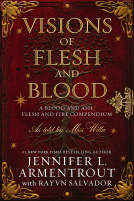
How to Draw Cool Stuff
Shading, Textures and Optical Illusions
by Catherine V. Holmes
This title was previously available on NetGalley and is now archived.
Send NetGalley books directly to your Kindle or Kindle app
1
To read on a Kindle or Kindle app, please add kindle@netgalley.com as an approved email address to receive files in your Amazon account. Click here for step-by-step instructions.
2
Also find your Kindle email address within your Amazon account, and enter it here.
Pub Date Sep 19 2021 | Archive Date Nov 10 2022
Talking about this book? Use #HowtoDrawCoolStuff #NetGalley. More hashtag tips!
Description
“How to Draw Cool Stuff: Basics, Shading, Texture, Pattern and Optical Illusions” is the second book in the How to Draw Cool Stuff series. Inside you will find simple illustrations that cover the necessities of drawing cool stuff. Specific exercises are provided that offer step-by-step guidelines for drawing a variety of subjects.
Each lesson starts with an easy-to-draw shape that will become the basic structure of the drawing. From there, each step adds elements to that structure, allowing the artist to build on their creation and make a more detailed image. Starting with the basic forms, the artist is provided a guide to help see objects in terms of simplified shapes. Instructions for shading to add depth, contrast, character and movement to a drawing are then covered. The varieties of texture and pattern that can be included in an artwork offer another layer of interest and depth to a design.
These elements are necessary to indicate the way something looks like it feels in a work (texture) or creating the repetition of shapes, lines or colors (patterns). Illustrated optical illusions involve images that are sensed and perceived to be different from what they really are, showing examples of how the mind and the eyes can play tricks on each other.
All you need is a piece of paper, a pencil and an eraser and you are ready to draw cool stuff. Once the drawing is complete, it can be colored, shaded or designed in any way you like to make it original. Following these exercises is a great way to practice your craft and begin seeing things in terms of simple shapes within a complex object.
Available Editions
| EDITION | Hardcover |
| ISBN | 9781732888821 |
| PRICE | $18.99 (USD) |
Average rating from 25 members
Featured Reviews
 Kids R, Educator
Kids R, Educator
How to Draw Cool Stuff is a perfect book for artistic creatives. This book is filled with drawing ideas for people of any age with step-by-step instructions. Perfect for novice and people trying to come up with new techniques and drawing ideas. I love the clear visual examples of ways to draw a human face, which is challenging for most. As the author pointed out in the epilogue, anyone can learn how to draw, it just takes practice. How to Draw Cool Stuff will be a perfect addition to our art classroom library.
A great way to start or restart drawing. Every chapter has a section explaining WHY the skill or technique is important, a section to practice, and a list of Tips to help with more practice later. A great gift idea or just for myself.
 Educator 901032
Educator 901032
Catherine V. Holmes provides step-by-step easy-to-follow lessons to drawing, shading, and talking about one's creations. Lessons combined art vocabulary and apply principles from math and science to help learners create realistic art and illusions. Tips and cautions of common mistakes are included in each short 1-2 page lesson. This book could be used to based lessons upon for oneself or a group. Older children could also use this for self-study or home-school art. Built-in pages provide room for guided practice of techniques discussed in the reading. Mandalas and Zen doodles are covered for those seeking more therapeutic uses for their art. A whole set of lessons cover anatomical drawings and Rube Goldberg machines to help encompass the Sciences. Optical illusions are also covered and could make great Maths and Language Arts writing connections.
 Librarian 784227
Librarian 784227
This is the second title in the How to Draw Cool Stuff series and goes further in-depth with shading, values, patterns, and optical illusions. There are fewer specific exercises to copy than in the first volume, and much more theoretics and vocabulary. A moderate amount of review from the first title is included. The drawing tutorials are conceptually broken down into three components: know, understand, and do. This is a great follow-up to the previous volume for an aspiring artist who does not have access to a teacher or wishes to work at their own pace independently.
 Media/Journalist 16509
Media/Journalist 16509
This is a very helpful art instruction book that would make a great homeschool curriculum. There are assignments to teach you various art basics like shading, perspective, etc. There's quite a lot of content and there are lots of examples and illustrations. Recommended.
I read a digital ARC of this book for review.
How to Draw Cool Stuff is a series of simple tutorial lesson books for learning drawing, written by Catherine V. Holmes. Originally published in 2015, this reformat and re-release from Library Tales is 239 pages and is available in hardcover format in this edition, other formats are available in other editions. It's worth noting that the ebook format has a handy interactive table of contents as well as interactive links and references throughout. I've really become enamored of ebooks with interactive formats lately. For Kindle Unlimited subscribers, this book is included in the KU subscription library to borrow and read for free, (as are the companion books in the series).
This volume presents concepts and lessons in shading, texture, pattern, and realism/optical illusions. Although firmly outside the target audience (young students and their facilitators), I found quite a lot of useful information here. The book has an accessible and direct style with information presented in an easy to understand format. Most of the lessons are divided into concepts (know), information (understand), and tutorials (do). Vocabulary and ancillary information are provided in each tutorial segment under their own headings.
The concepts are very simple and the tutorial lessons include blank areas on each page for students to practice and master specific techniques. The tutorials are grouped into thematic chapters: basic elements of design, shading, texture & pattern, optical illusions, and a sort of synergistic chapter combining the rest of the tutorials into lessons for drawing "cool stuff" (t-rex, animals, self-portrait, and a bunch of others).
The book is laid out as, and would work very well as, lesson plan hand-outs for workshop, classroom, or homeschool use. This would also be a good choice for adults who spend time with young kids to improve their "draw with me" skills.
Four and a half stars. Very simple but useful for classroom and home use.
Disclosure: I received an ARC at no cost from the author/publisher for review purposes.
This is an excellent companion to the How to Draw Cool Stuff: Drawing Guide For Teachers and Students. It again uses simple and easy-to-follow step-by-step instructions for drawing a wide variety of subjects but this time includes detailed information on shading and texture.
I am always a bit hesitant about shading my drawings, but now I feel equipped to attempt it. I am definitely eager to pull out my sketchbook.
This book has a bit more written instruction and description, which is helpful in learning the different types of shading and texture covered in these examples.
Again I would recommend this to everyone from beginner to advanced artist, although I do recommend starting with the Drawing Guide in order to become comfortable with breaking down objects into shapes before getting into the more complicated shading.
*Thanks to NetGalley and Library Tales Publishing for providing an e-arc for review.
 Angela R, Educator
Angela R, Educator
Fantastic drawing book! I would absolutely use this in my curriculum or classroom for learning to draw for students of any age. Excellent lessons by Catherine Holmes, and step by step directions.
The thing I liked the best about this book was the, “Know, Understand, Do” pages preceding every lesson. So many step-by-step books do not explain anything about the art process or the vocabulary and terms of what the student is learning. This book goes into depth explaining vocabulary and methodology of each lesson in an easy to understand way.
I will look for more of Catherine Holmes‘s books in the future, knowing I will be getting a thorough understanding of the subject, and will be sure to recommend this to students and parents.
Thank you to NetGalley and Library Publishing‘s for providing a free copy of this book for my honest opinion.
Very cool! Not for advanced or experienced artists at all, but great for youngsters looking to hone a few skills or considering a future in graphics.
3.5 stars.
Thanks to the publisher, author and NetGalley for my ARC.
 Jennifer M, Reviewer
Jennifer M, Reviewer
Thanks to the publishers for sharing this book. It's a handy guide that would be useful for teachers, and some of the optical illusions are really interesting. My full review appears on Weekend Notes.
This is the second book by this author I have had the please of reading. The tutorials are well organized and explained and the tips and techniques are excellent. I highly recommend this book to artists new to drawing and this would maje an excellent gift to young artists. I loved the sea horse and regular horse tutorials and so much more. The book is very useful fir understanding light, Shading and basic shapes. Very well written.
 Helen Z, Librarian
Helen Z, Librarian
I like that the basics are stressed and reinforced throughout the lessons in this book. The lessons are step-by-step and accessible to the dedicated learner. I liked the end result drawings as well.
 jc C, Educator
jc C, Educator
How to Draw Cool Stuff is the second book in this series that focusses on shading, textures and optical illusions. The tutorials are easy to follow and aimed at teaching a specific technique. The selection of projects is good and lots of tips are included to help you improve your work. Perfect for young artists, or beginners just starting out.
 Reviewer 972251
Reviewer 972251
Thank you to Netgalley and publishers for the ARC in exchange for an honest review.
I love this book and the other one I was sent of the same name. I have fun doing some of the drawings and I plan to continue trying to do some of the techniques. I think this is a great book for all ages.
 Naomi D, Reviewer
Naomi D, Reviewer
My son loves drawing and absolutely loves any book that will teach him how to draw different things. He really liked this book and wants a physical copy.
A great book for anyone looking to level up their drawing skills!
Easy to follow instructions and done in a simplistic way allowing a wide audience the opportunity to learn. Shading, textures, patterns, optical illusions, this was a great “How To” book.
A sincere thank you to NetGalley and Library Tales Publishing for providing me an advanced copy of “How to Draw Cool Stuff” in exchange for an honest review. I am grateful to have had the opportunity to read this story and leave my review voluntarily.
Readers who liked this book also liked:
L.M Montgomery
Children's Fiction, Comics, Graphic Novels, Manga, Teens & YA
Suzana Harcum; Owena White
Comics, Graphic Novels, Manga, LGBTQIAP+, Teens & YA
Joe Flood
Children's Nonfiction, Comics, Graphic Novels, Manga, Science
Jennifer L. Armentrout and Rayvn Salvador
Reference, Romance, Sci Fi & Fantasy
